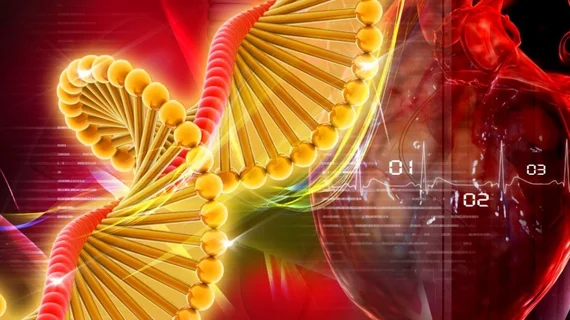Researchers ID genetic variant associated with warfarin-related bleeding
A team of Chicago researchers has identified four genetic variants specific to people of African ancestry which may help explain their increased incidence of warfarin-associated bleeding events.
All four single-nucleotide polymorphisms (SNPs) were in linkage disequilibrium on chromosome 6 and were associated with more than eight times the risk of major warfarin-related bleeding compared to individuals without those variants. Major bleeding events were defined as bleeding requiring hospitalization, causing a decrease in hemoglobin level of more than 2 g/dL or requiring blood transfusion while taking warfarin at an International Normalized Ratio (INR) of less than 4.
“The associated SNPs are relatively common among persons of African descent, as evident by the minor allele frequency of 7% in persons of African descent from the 1000 Genomes Project,” lead author Tanima De, PhD, with the Northwestern University Department of Pharmacology, and colleagues wrote in JAMA. “The haplotype is found exclusively in populations with African ancestry and therefore may represent a population-specific genetic risk factor that exposes African-Americans to a higher risk of bleeding during warfarin therapy.”
De et al. performed a genome-wide association study in patients of African ancestry who were taking warfarin. Their discovery cohort consisted of 31 participants who had warfarin-associated bleeding events and 184 controls who took warfarin for at least a year without documented bleeding.
The SNPs were present in 35.5 percent of the bleeding cases and just 4.9 percent of control individuals. Likewise, in a replication cohort of 40 cases and 148 warfarin-treated controls, the SNPs were present in 35 percent of the bleeding group and 4.8 percent of the non-bleeding group.
When the cohorts were pooled together, the presence of the genetic variants was associated with an 8.27-fold risk of major bleeding—enough to achieve genome-wide significance.
Notably, adding the presence of the alleles to the validated HAS-BLED scoring system boosted that model’s predictive accuracy, with a net reclassification improvement of 11.8 percent. The C-statistic—a measure of accuracy with 1.0 representing a perfect test—was 0.67 for the HAS-BLED score alone and 0.78 when one of the SNPs was added to the HAS-BLED scheme.
“Although evaluation of the risk of bleeding is challenging, this study suggests that considering clinical and genetic risk factors together may lead to better bleeding risk prediction,” De and coauthors wrote. “However, improvement in bleeding risk prediction by SNP inclusion to the HAS-BLED scheme is a preliminary finding and needs to be validated prospectively.”
The specific SNPs identified in the study were rs115112393, rs16871327, rs78132896 and rs114504854. De et al. said because one polymorphism in a haplotype can predict the allele of an adjacent variant, the replication cohort was genotyped only for rs78132896.
Two of those alleles were found to increase the expression of the EPHA7 gene, which the researchers speculated may have played a role in the heightened bleeding risk.
“Ephrin receptor–ephrin (ligand) interactions support thrombus growth and stability by regulating integrin signaling in activated platelets and thus may play an important role in hemostatic plug formation. … The EPHA7 protein has been shown to promote cell repulsion and block ephrin receptor–ephrin interactions,” they wrote. “Based on these findings, we hypothesize that the increased expression of the EPHA7 gene can lead to bleeding in patients who are taking warfarin and carrying the risk variant by inhibiting ephrin receptor–ephrin interaction.”
The authors reiterated the need for further research in this area, in addition to determining whether EPHA7 gene expression may also signal higher bleeding risks for other anticoagulants.

